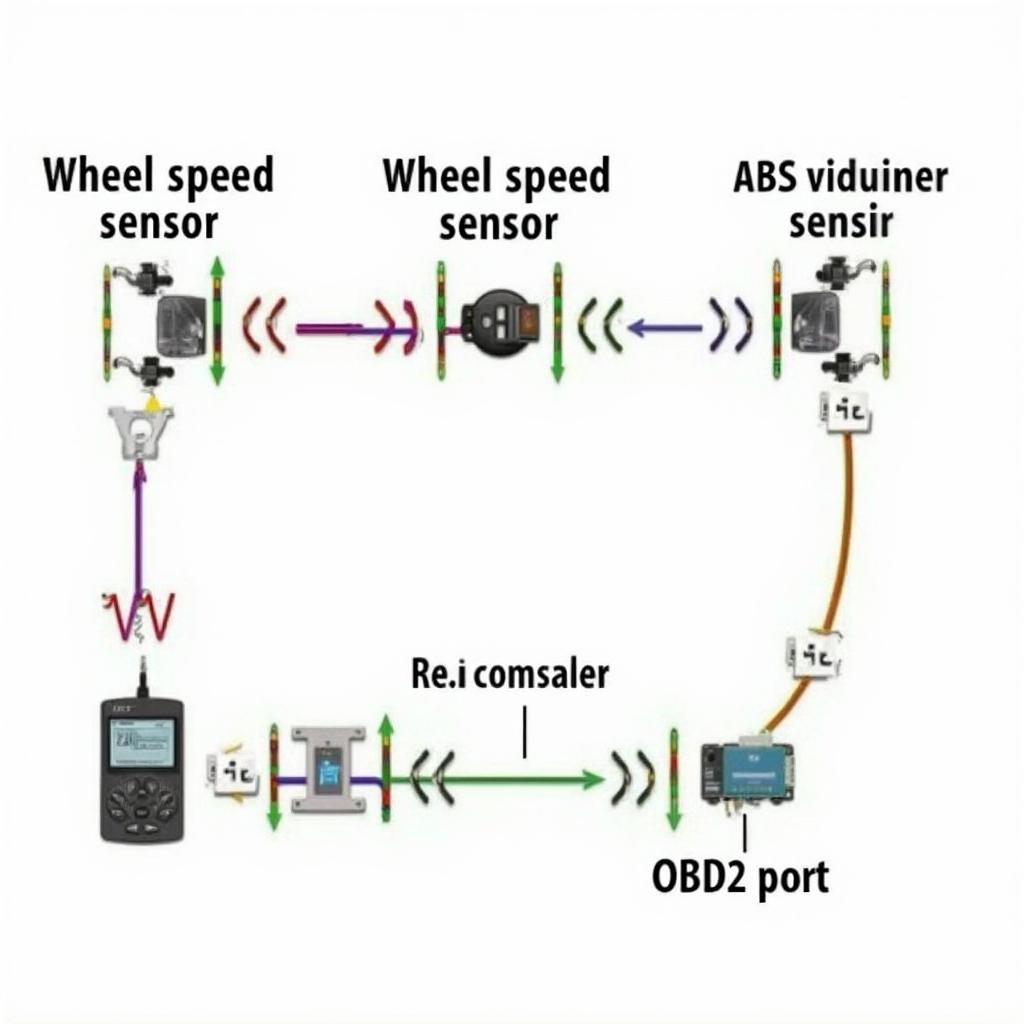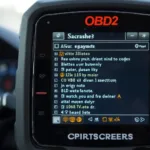OBD2 ABS signals are crucial for diagnosing anti-lock brake system (ABS) issues. This article delves into the intricacies of these signals, explaining how they work, why they’re important, and how you can use an OBD2 scanner to interpret them. Understanding these signals can empower you to pinpoint ABS problems, potentially saving you time and money on repairs.
 OBD2 ABS Signals Explained
OBD2 ABS Signals Explained
What are OBD2 ABS Signals?
OBD2 ABS signals are digital messages transmitted from your vehicle’s ABS module to your OBD2 scanner. These signals provide valuable data about the functioning of your ABS, including wheel speed, brake pressure, and system errors. They are essential for diagnosing a wide range of ABS issues, from faulty sensors to more complex control module problems. An understanding of obd2 abs connector signals is beneficial in interpreting these signals correctly.
How Do OBD2 ABS Signals Work?
Your car’s ABS relies on a network of sensors, primarily wheel speed sensors, to monitor each wheel’s rotational speed. These sensors constantly send signals to the ABS module. The module processes this data and, when it detects impending wheel lockup during braking, modulates brake pressure to prevent skidding. This entire process generates data that is then transmitted as OBD2 ABS signals, accessible through your OBD2 port. For instance, if a wheel speed sensor malfunctions, the ABS module will detect the anomaly and generate a corresponding diagnostic trouble code (DTC). This DTC, carried within the OBD2 ABS signal, can then be read by a scanner. You might find information about specific codes like c1002 obd2 helpful in such situations.
Why are OBD2 ABS Signals Important?
OBD2 ABS signals are invaluable for diagnostics. They allow you to identify the root cause of ABS problems quickly and efficiently. Without access to these signals, diagnosing ABS issues could involve a tedious process of checking individual components, often leading to unnecessary replacements.
Diagnosing ABS Problems with OBD2 Signals
Using an OBD2 scanner capable of reading ABS signals gives you a direct window into your ABS system’s operation. This can significantly simplify the diagnostic process and help you pinpoint the exact problem. By reading the DTCs and monitoring live data, you can quickly identify faulty wheel speed sensors, malfunctioning ABS modules, or problems with the wiring harness.
“Understanding OBD2 ABS signals can empower even DIY enthusiasts to troubleshoot ABS problems effectively,” says automotive expert, Michael Davies. “The ability to access this data through a scanner saves significant time and effort in diagnosing complex issues.”
Interpreting OBD2 ABS Signals
Interpreting OBD2 ABS signals requires understanding the meaning of specific DTCs. You can find resources online that provide detailed explanations of various ABS codes. For specific manufacturers, you might look for resources like subaru obd2 abs codes. While the codes themselves provide valuable clues, interpreting them in conjunction with live data streamed from the ABS system through the OBD2 port gives you a comprehensive understanding of the issue.
Common OBD2 ABS Signals and their Meanings
While the specific codes vary between manufacturers, certain general categories of ABS codes exist. These include codes related to wheel speed sensors, hydraulic control unit malfunctions, and communication errors. The obd2 code u0700 is an example of a communication error code.
Conclusion
Understanding obd2 abs signals is essential for effectively diagnosing and resolving ABS issues. By utilizing an OBD2 scanner and interpreting the signals correctly, you can save valuable time and money. Having access to this information empowers you to maintain your vehicle’s safety and performance effectively.
FAQs
- What is an OBD2 ABS signal? It’s a digital message from your car’s ABS module providing data about its function.
- Why are these signals important? They allow you to diagnose ABS problems accurately.
- How do I interpret these signals? You’ll need an OBD2 scanner and a resource for interpreting the codes.
- Can I diagnose ABS problems myself? Yes, with an OBD2 scanner and some research.
- Where can I find more information on specific ABS codes? Numerous online resources provide detailed code explanations.
- What are some common ABS-related codes? These include wheel speed sensor errors, hydraulic control unit malfunctions, and communication errors.
- What should I do if I see an ABS warning light? Use an OBD2 scanner to read the codes and diagnose the issue.
Need Help? Contact us via WhatsApp: +1(641)206-8880, Email: cardiagtechworkshop@gmail.com or visit us at 789 Elm Street, San Francisco, CA 94102, USA. Our customer service team is available 24/7.

